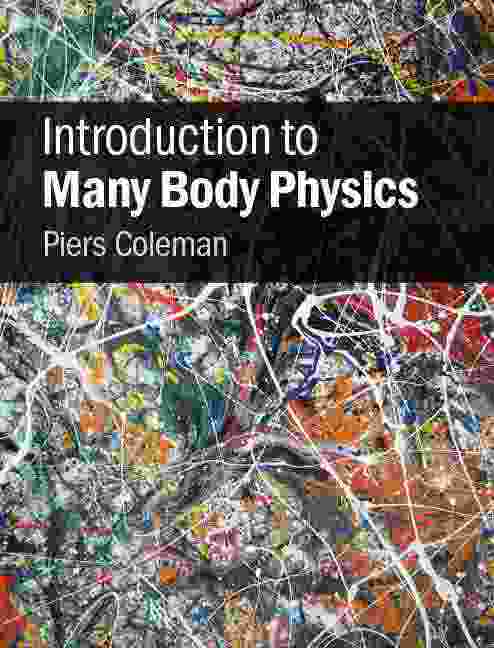1/14/15
Advanced Topics in Condensed Matter
Strongly Correlated Electrons: electrons
at the Brink of Magnetism.
682A Spring 2015
| Images | Texts |
Exercises |
Times of Course |
Syllabus outline |
Timetable |
Discrete construction of a path integral |
Illustrating the Effective Action in Path Integral |
Relationship between Meissner Effect and Phase Rigidity of a Superconductor. |
Gap Structure of a d-wave superconductor |
Phase Diagram of the Kondo Effect |
Topological (Kondo )Insulators. |
Instructor: Piers Coleman, Room 268
If you have any questions about this course or the
homework, please do not hesitate to contact me via email
at : coleman@physics.rutgers.edu
Scope of Course. This course will provide an
introduction to strongly correlated electron
systems. Starting with a path-integral
approach to many body physics, we will revisit
superconductivity, going on to discuss itinerant
magnetism, anisotropic superconductivity, local
moment formation, the Kondo Lattice and the physics of
heavy fermion materials: metals, superconductors,
topological Kondo insulators and if we have time, quantum
criticality. The course will be based on the last
seven chapters of my book, "Introduction to Many-Body
Physics".
 |
The reference texts will be ``Introduction to Many-Body Physics'', Piers Coleman, (CUP, Dec 2015). Chapters 12-18. (To be provided as course material.)
|
-
Here are some additional useful references:
- Condensed Matter Field Theory by Alexander Altland and Ben Simons.(CUP, 2006)
- Advanced Solid State Physics by Philip Phillips, second edition (CUP, 2012).
- Basic Notions in Condensed Matter Physics by P. W. Anderson, Benjamin Cummings 1984. A classic reference. Many of us still turn to this book for inspiration, and philosophy. It also has a fine selection of important reprints at the back.
-
Quantum Field Theory in Condensed Matter Phyiscs, A. M. Tsvelik, Cambridge University Press, 2nd edition (2003).
- R. Shankar, Rev Mod Phys 66 129 (1994). An amazingly self-contained review of the renormalization group and functional integral techniques written by one of the best expositors of condensed matter physics.
- ``Field Theories of Condensed Matter Physics'' by E. Fradkin. (Frontiers in Physics, Addison Wesley). Interesting material on the fractional statistics and the fractional quantum Hall effect.
- ``Methods of Quantum Field Theory in Statistical Physics'' by Abrikosov, Gorkov and Dzyalozinskii. (Dover Paperback) - Classic text from the sixties, known usually as AGD.
- ``A guide to Feynman Diagrams in the
Many-Body problem by R. D. Mattuck. A light
introduction to the subject. Reprinted by Dover.
- ``Greens functions for Solid State Physics'' S.Doniach and E. H. Sondheimer. Not as thorough as AGD, but less threatening and somehow more manageable. Frontiers in Physics series no 44.
- ``Quantum Many Particle Systems'' by J. W. Negele and H. Orland. Alas all the good physics is in the unsolved exercises! However, it is the only one of this set to touch on the subject of functional integrals.
- The Theory of Quantum Liquids by D. Pines and P. Nozieres. Excellent introduction to Fermi liquid theory that avoids the use of field theory.
- Statistical Physics, vol II by Lifshitz and Pitaevskii. Pergammon. Marvellous book on applications of many body physics, mainly to condensed matter physics.
Traditional Many Body Theory and Greens Functions
Further references:
Some
Online references (Check it out- this is a great
link).
Exercises 628 (Return to top)
Homework 2 Solution 2
Homework 3
Final Take Home
(Return to top)
Times: 1.40 pm on Monday and 1.40 pm on Monday in Serin-401. We will start on Weds Jan 21. Occasionally, to make up for my travel, we will hold an additional class, on Thursdays 1.40-3pm Serin 287 (Condensed Matter Reading room).
Office hour: Officially: 9.50am Fridays but come by if you have questions. Tel x 9033.
Assessment: I anticipate four or five take home exercises and one take-home final. I want to encourage an interactive class and will take this into account when grading!
(Return to top)
Outline Here is the provisional outline.
- Functional Integral Approach to interacting electron
systems
- Superconductivity, particularly Anisotropic pairing and superfluid He-3.
- Local Moment Formation
- Heavy Fermions and the Kondo Lattice.
- Mixed Valence and Topological Kondo Insulators
(Return to top)
Schedule:
Week |
Mon 1:40-3:00 Serin 401 |
Weds 1:40 Serin 401 |
Extra class Time: Thursday 1.40pm CMT Reading Room |
1.Jan 19-23 |
21st
Jan. 1.40 Serin 401 First Class of Semester Why path integrals? Coherent states and the bosonic path integral. |
||
2 Jan 26-30 |
Fermions
with path integrals. |
The
Hubbard Stratonovich transformation, the concept of
the effective action and the link with Landau
Theory. |
Jan
29th. 1.40 Serin 287 Some simple Examples. |
3 Feb 2-6 |
Itinerant Magnetism from path integrals: the Ferromagnet. | Zero point
magnetic fluctuations and and quantum critical
points. |
|
4 Feb 9-13 |
No Class |
No Class |
|
5 Feb16-20 |
BCS
Theory with path integrals. |
Nambu
Green's function and tunneling density of states. |
Feb
19th Superfluid stiffness as phase rigidity. |
6 Feb 23-27 |
Retardation
and anisotropic pairing: BCS theory with momentum
dependent coupling. |
Retardation
and the Coulomb pseudopotential. Anisotropic superconductivity: d-wave pairing. |
|
7. Mar 2-6 |
Anisotropic
pairing: superfluid He-3. Nambu matrices for
spin. |
Anisotropic
pairing: superfluid He-3B and the Balian Werthammer State. Calculation of Knight Shift. |
|
8. Mar 9-13 |
|||
9. Mar 16-20 |
Spring Break |
Spring Break |
Spring Break |
10. Mar 23-27 |
|
No
Class |
March
26th Extra |
11. Mar 30-April 3 |
|||
12. Apr 6-10 |
April
9th Extra |
||
13. Apr 13-17 |
No Class |
No Class |
|
14. Apr 20-24 |
|||
15. Apr 27-May 1 |
|||
| 16. May 4 |
Last class |
(Return to top)